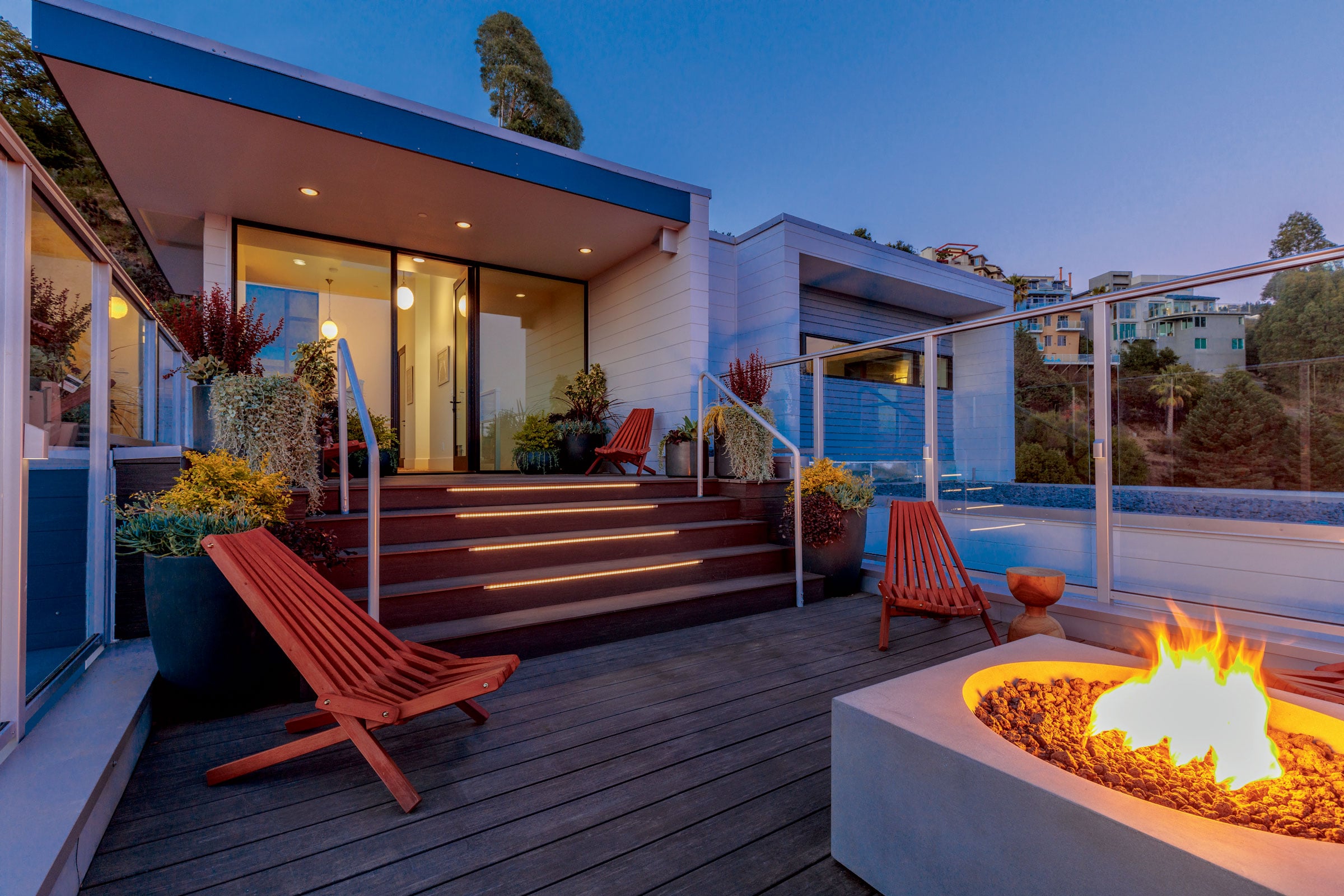Homeowners with wood decks are intimately aware of the costs and hassle of upkeep. If you want the look of wood without the maintenance, there’s another option: composite decking.
What is Composite Decking?
To start, let’s cover the basics. Technically speaking, a “composite” deck is really anything made of two or more materials (typically nonmetallic) that are blended or fused together to form the structure of the deck board. However, composite decking is a term largely used to describe the two main types of synthetic decking materials used today: capped wood-plastic and capped-polymer decking.
Capped wood-plastic composite decking uses a combination of wood fiber (sawdust or wood flour) and plastic resins that are combined under heat and pressure to form the core of the deck board. Capped-polymer decking uses a blend of resins and other performance additives without any organic materials in the core of the board. In both cases those core materials are then encased in a hard, protective shell or “cap,” that provides the design, color, or grain pattern and the scratch, stain, fade, and moisture resistance. Both types of materials create a high-performance and durable decking product.
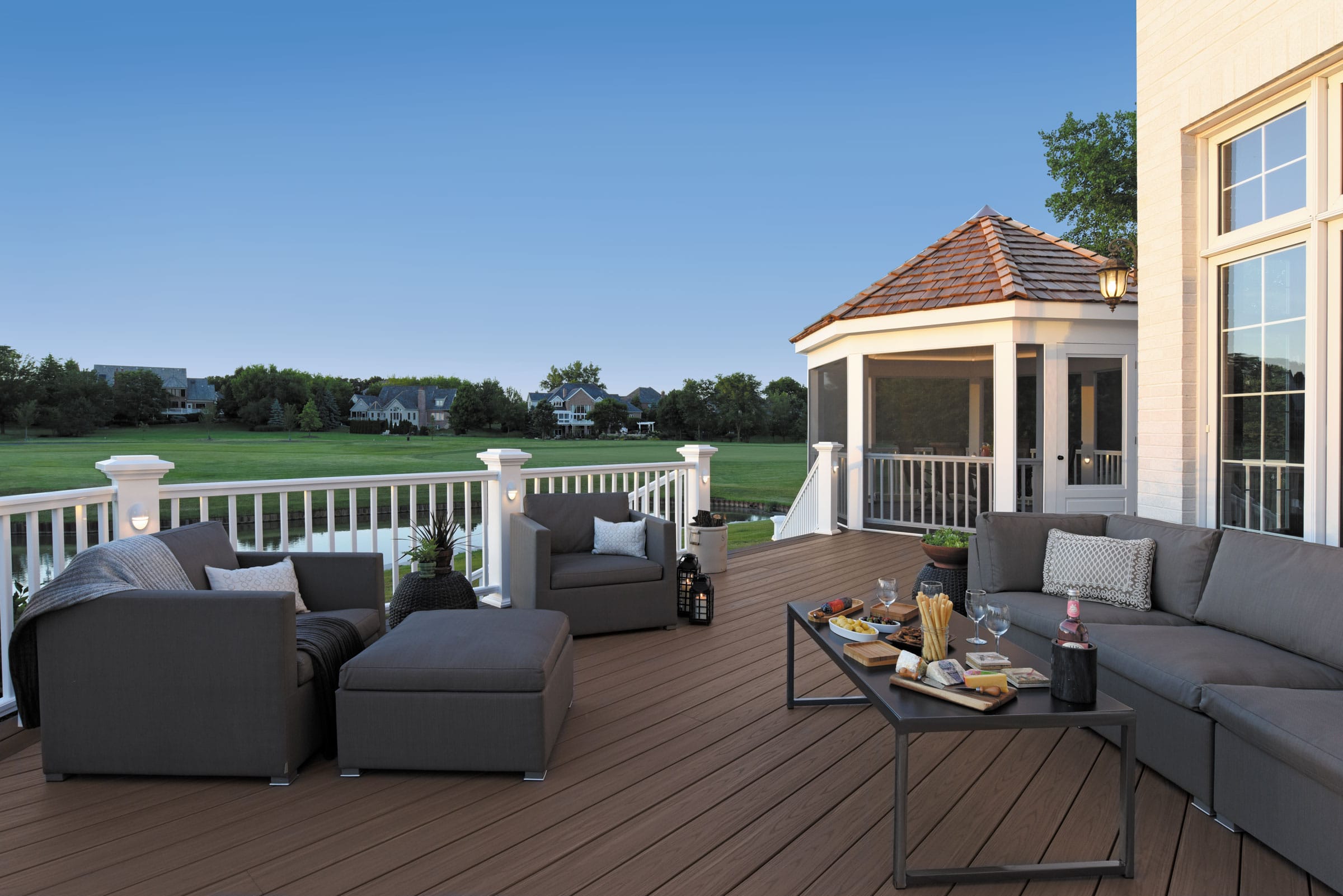
Photo courtesy of The AZEK Company
In general, wood-plastic composites are heavier, somewhat more difficult to work with and can get hotter in direct sunlight but come at a lower cost. And, though not nearly as susceptible to moisture-related issues as wood decking, if the product is not capped on all four sides, there can be some minor issues in high-moisture climates.
On the other hand capped-polymer decking is lighter; easy to install with no pre-drilling required; about 30% cooler than a wood-plastic composite deck of the same color due to lower thermal mass; and has no organic material in it, so it is virtually impervious to moisture—even high-moisture conditions—over extended periods of time.
One of the biggest environmental benefits is that most of the material used in composite decking is recycled. So instead of cutting down forests to make wood decks, we reuse millions of pounds of waste sawdust and disposable plastics to create beautiful decks that last much longer and perform better than real wood.
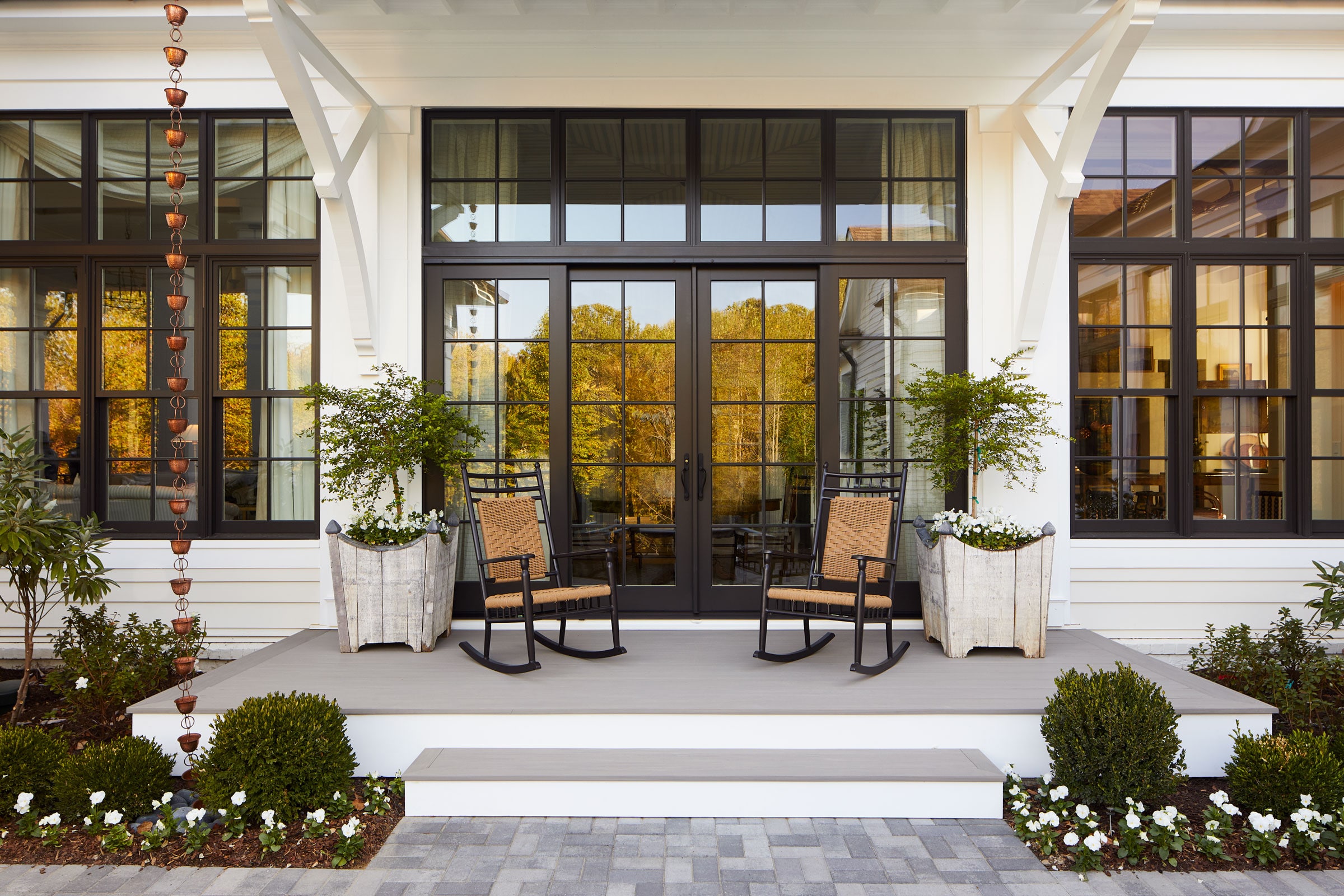
Photo courtesy of The AZEK Company
Why Should I Consider Composite Decking Over Real Wood?
Certainly, maintenance and durability are two key considerations. On the maintenance side, if you really want a wood deck to last and maintain its appearance, you need to commit to an annual maintenance program of deep cleaning, staining, and resealing the deck to prevent rot and decay. That goes for pressure-treated pine, cedar, redwood, and exotic or tropical hardwoods like Ipe. With the better composite products on the market today, homeowners can forget the annual sanding, sealing, and staining. The only maintenance required to keep a composite deck looking great is occasional washing with a mild cleaner and water.
From a durability perspective, even with the annual maintenance program outlined above, a well-built pressure-treated pine, cedar, or redwood deck has a reasonable service life of 15 years or so, depending on the climate (a little more in dry, mild climates and a little less in most other parts of the country). With very little maintenance, a high-quality capped-composite or polymer deck will last up to 50 years. And that not only includes structural integrity but also the appearance of the deck (fade and stain), rot, insect damage, boards warping or splitting, and so on.
However, there are many other considerations that I think homeowners should keep in mind when evaluating their decking choices. For example, rather than cutting down forests to make wood decks, most of the material used in composite decking are recycled materials. In fact, TimberTech actually recycles hundreds of millions of pounds of waste sawdust and disposable plastics in the production of our decking and other building products. Overall the composite decking industry is a significant net consumer of waste products that would otherwise end up in a landfill or incinerator, and we turn them into beautiful and incredibly long-lasting decking products.
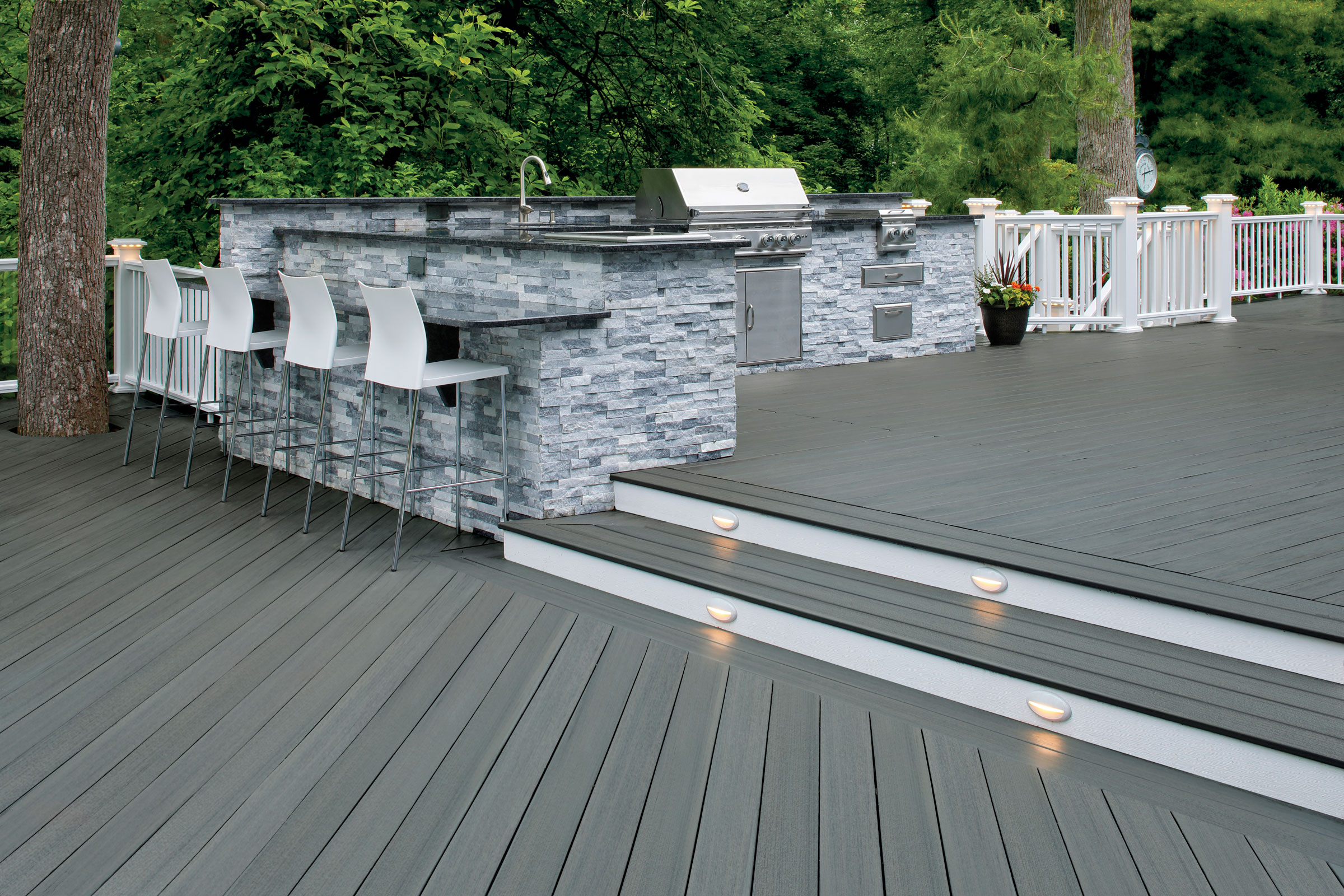
Photo courtesy of The AZEK Company
How is Composite Decking Sustainable?
TimberTech places a very strong emphasis on sustainability in everything we do. It’s built into the fabric of the company. First, we recycle virtually 100% of any of the scrap or waste materials produced in our manufacturing processes. Second, we actively source post-industrial and post-consumer recycled materials on the open market to put into our products. Still, we found that to achieve a more consistent and dependable source of supply, and drive up the recycled content of our products as high as possible, we needed to invest more directly in our own recycling capabilities. To that end we built a state-of-the-art plastics recycling facility near our plant in Wilmington, Ohio, to supply material for the core of our capped wood-plastic composite decking products. We then sought out and partnered with a company that specializes in harder-to-recycle plastics like PVC for use in our capped polymer products.
By using composite decking materials, which are primarily made from recycled sources, we save an average of 1.2 trees per deck, which has equated to more than one million trees saved since 2015. Through our recycling program, we’ve been able to reuse more than 300 million pounds of scrap or waste materials this year, keeping them out of landfills and instead turning them into beautiful and sustainable products.
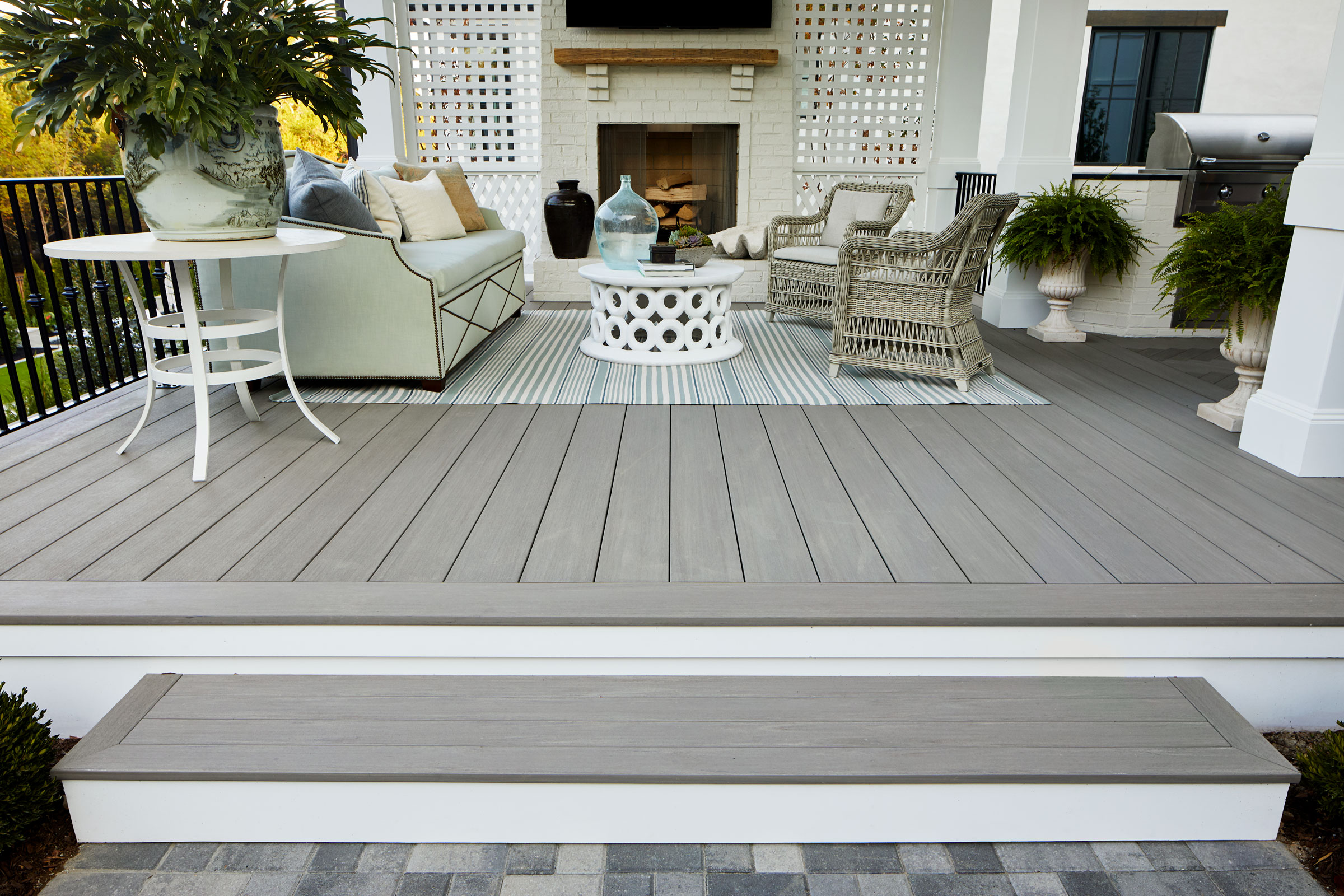
Photo courtesy of The AZEK Company
Maintaining a composite deck is also better for the environment. Composite decks simply require mild soap and water, whereas maintaining a wood deck requires the use of harsh chemicals that harm the environment, including:
- Wood stains and sealants
- Paint and paint strippers
- Chemical cleaners
- Wood preservatives
- Insecticide
- Mildewcide and fungicide
People often think that if you’re making the green choice that you then ultimately have to give something up. With composite decking it’s quite the opposite. Composite decks are the smart, sustainable choice, from visual quality and long-term performance to the number of trees saved. The kicker? A beautiful, natural wood look for homeowners without the downfalls and maintenance that come with real wood.

